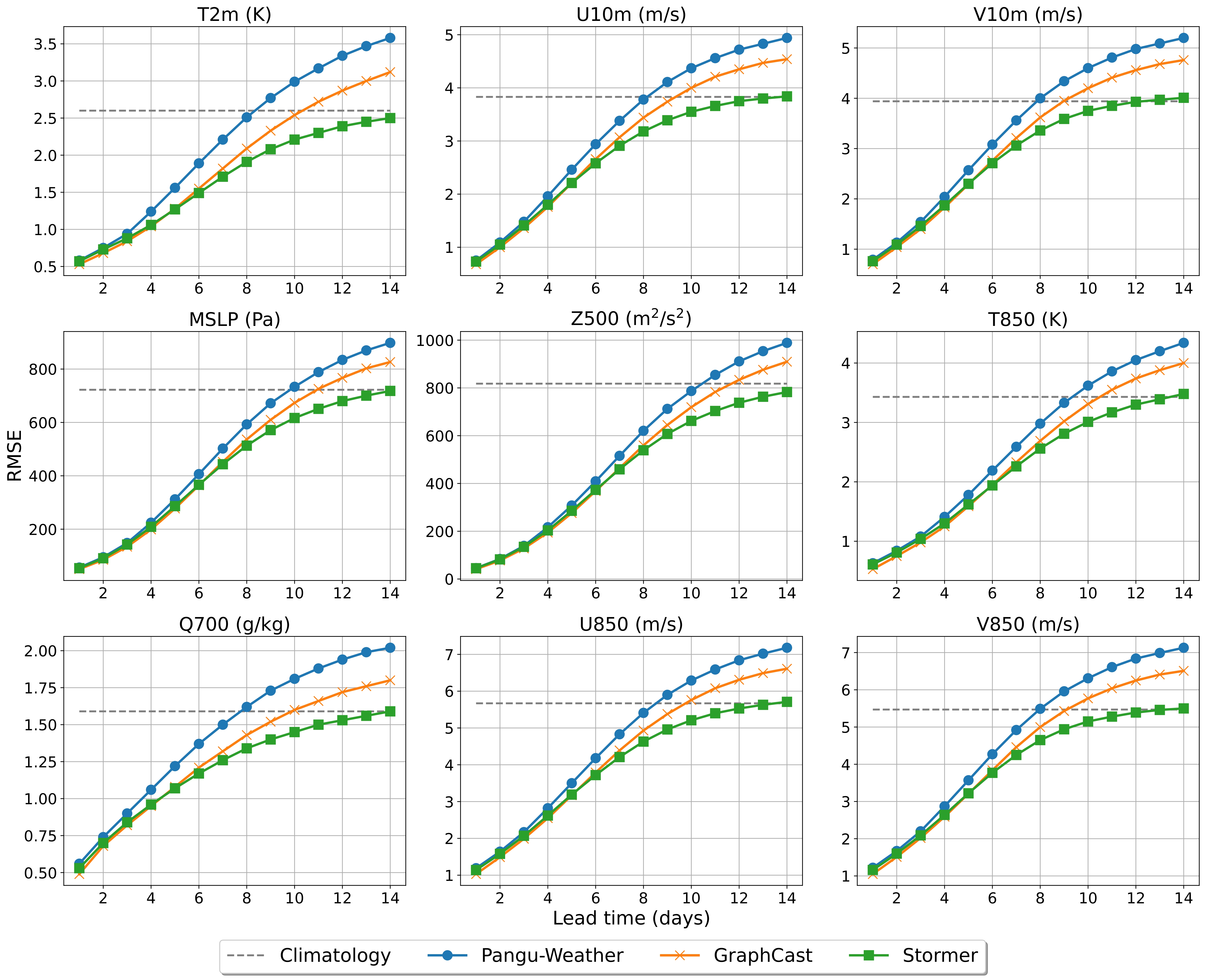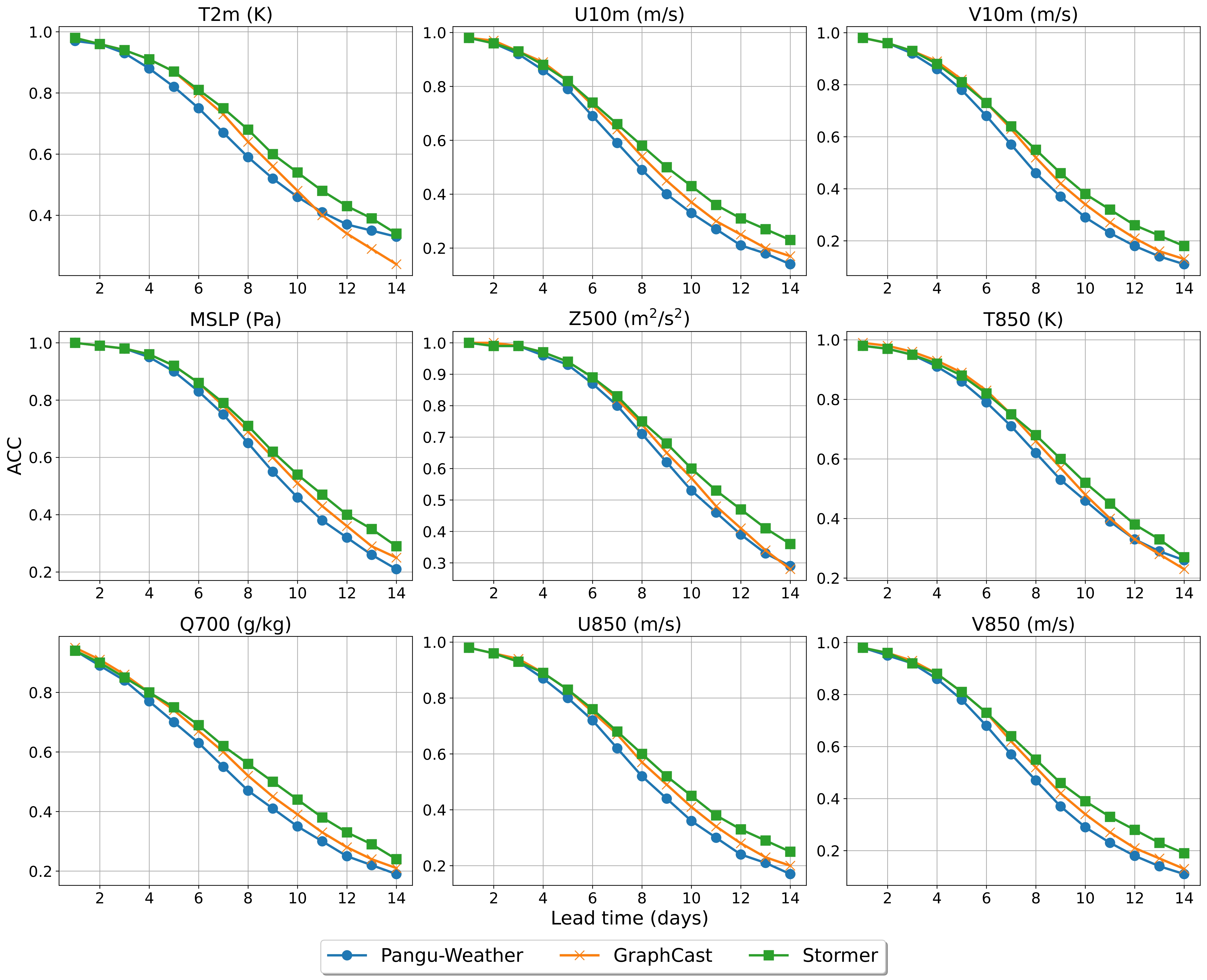|
Weather forecasting is a fundamental problem for anticipating and mitigating the impacts
of climate change. Recently, data-driven approaches for weather forecasting based on deep
learning have shown great promise, achieving accuracies that are competitive with operational
systems. However, those methods often employ complex, customized architectures without
sufficient ablation analysis, making it difficult to understand what truly contributes to their
success. Here we introduce Stormer, a simple transformer model that achieves state-of-the-
art performance on weather forecasting with minimal changes to the standard transformer
backbone. We identify the key components of Stormer through careful empirical analyses,
including weather-specific embedding, randomized dynamics forecast, and pressure-weighted
loss. At the core of Stormer is a randomized forecasting objective that trains the model to
forecast the weather dynamics over varying time intervals. During inference, this allows us to
produce multiple forecasts for a target lead time and combine them to obtain better forecast
accuracy. On WeatherBench 2, Stormer performs competitively at short to medium-range
forecasts and outperforms current methods beyond 7 days, while requiring orders-of-magnitude
less training data and compute. Additionally, we demonstrate Stormer’s favorable scaling
properties, showing consistent improvements in forecast accuracy with increases in model size
and training tokens. Code and checkpoints will be made available.
|





